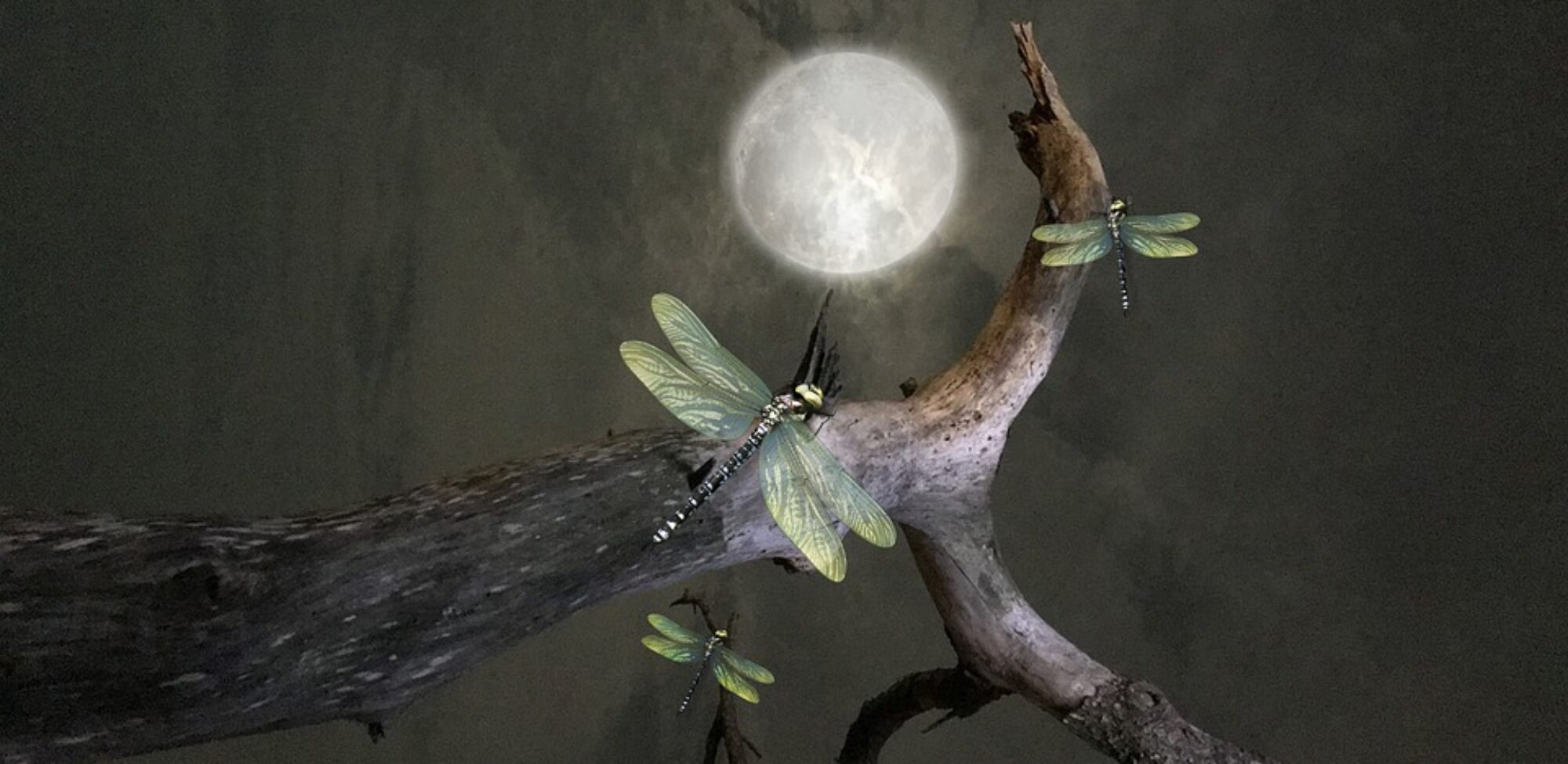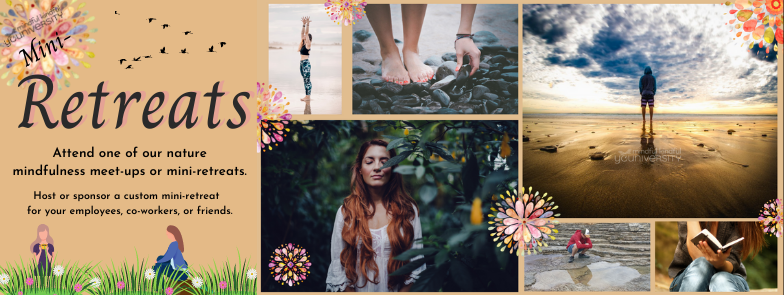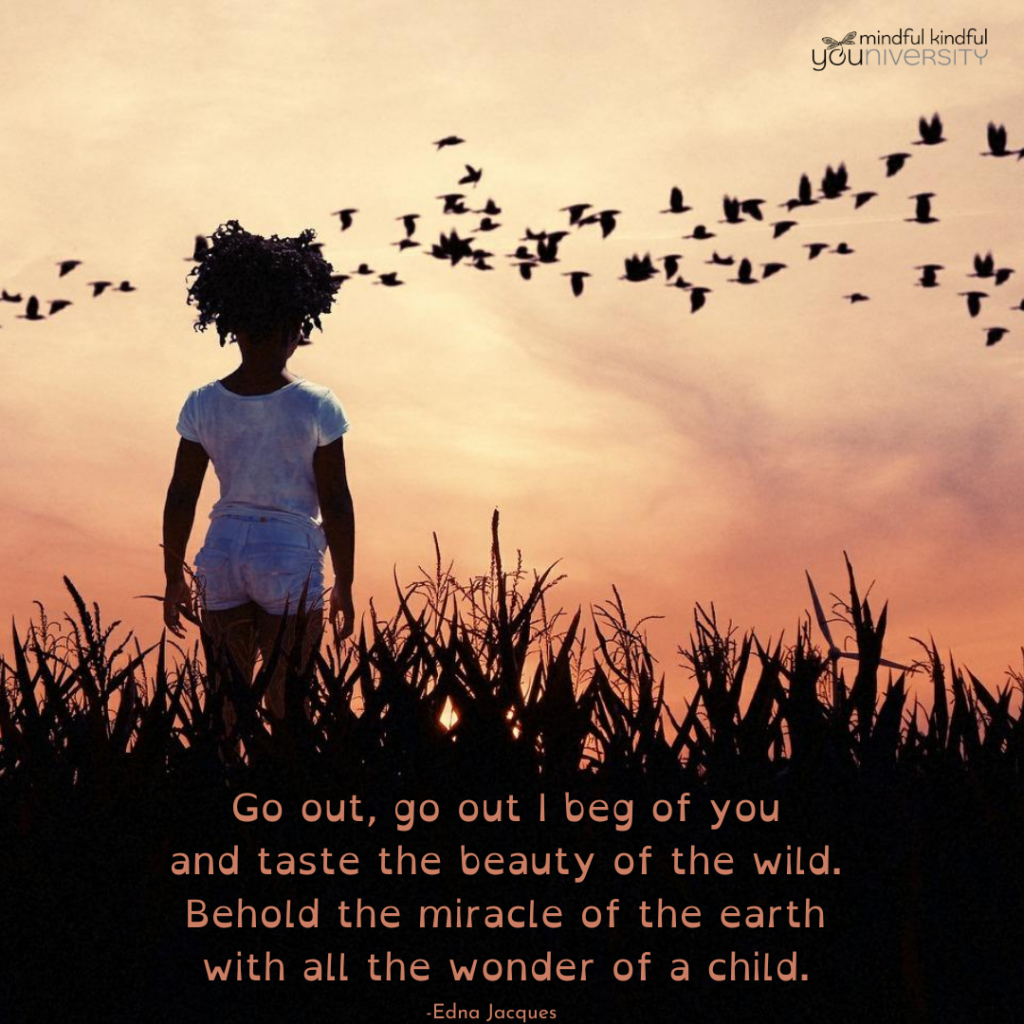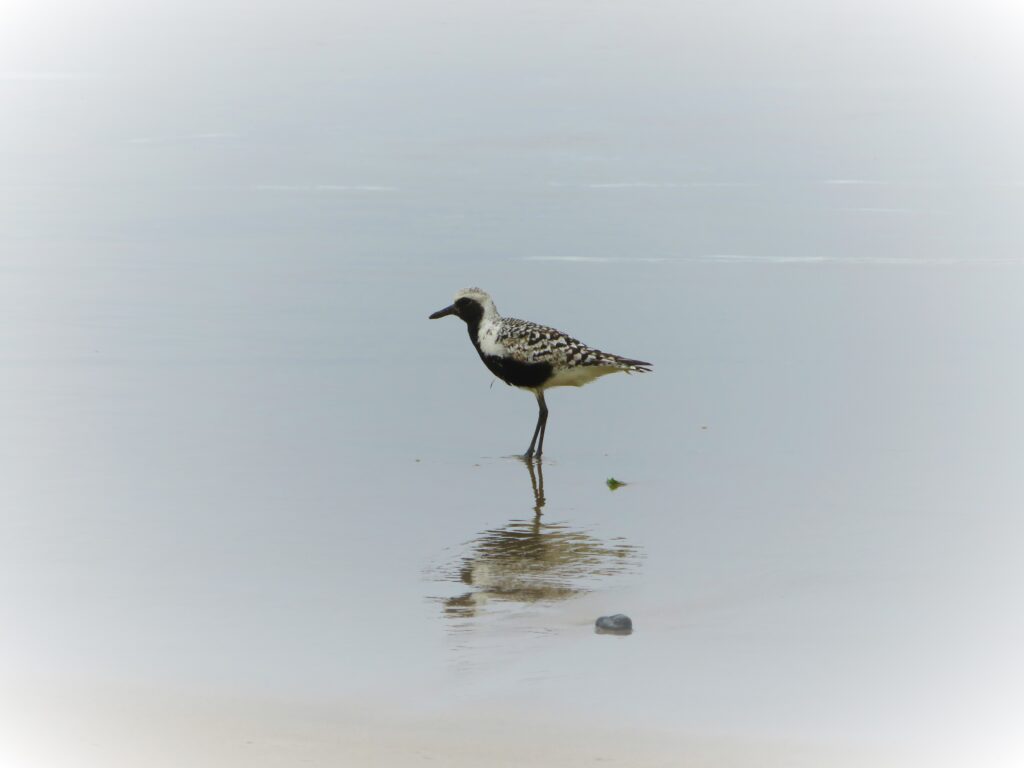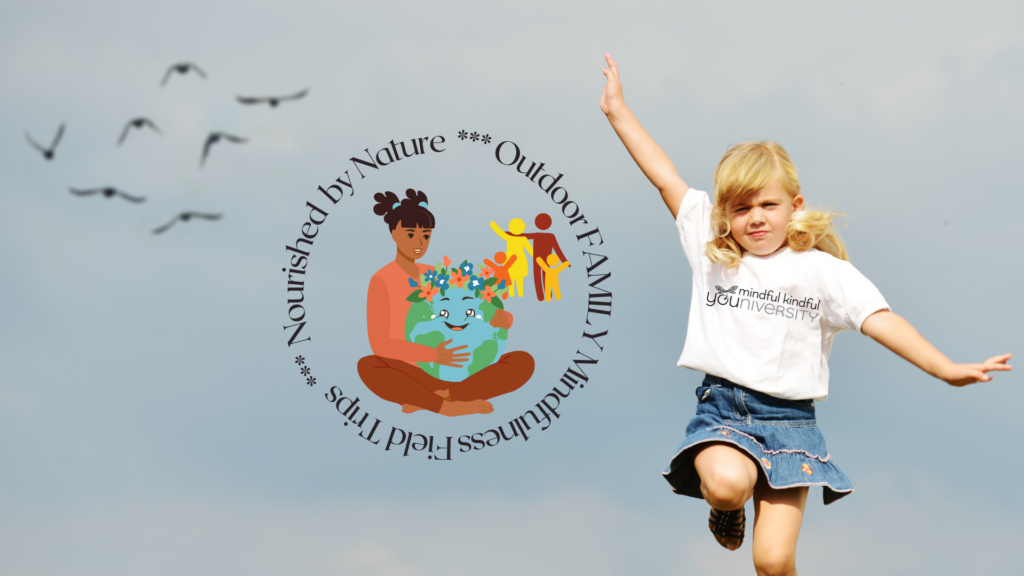Other than being in a forest or in the mountains, walking on a beach is my gateway to feeling soul-level peace ~ especially on a quiet, uncrowded beach where I happen to have lots of access to on the beautiful central coast of California. Although I frequent many of my favorite same beaches for my walks, I always know it’s going to be a different experience each time. I often think of Maya Angelou’s quote ‘This is a wonderful day, I have never seen this one before.’ How true that is because the tide, the winds and weather, the seasons all have a role in what the beach will look like each time. I feel like a child with wild curiosity and anticipation of what will be awaiting discovery and welcome it all. Some days many sand dollars may have washed up, another day lots of stones are exposed, and another day moon jellies, or even the contour of the beach can be significantly changed.
Also quite notable is the varying amounts of beach wrack from day to day. Beach wrack is the scientific term for the seaweed and seagrasses that the ocean waves wash up onto the beach.
Some days there are just a few uncomplicated strands gracing the sandy shore…
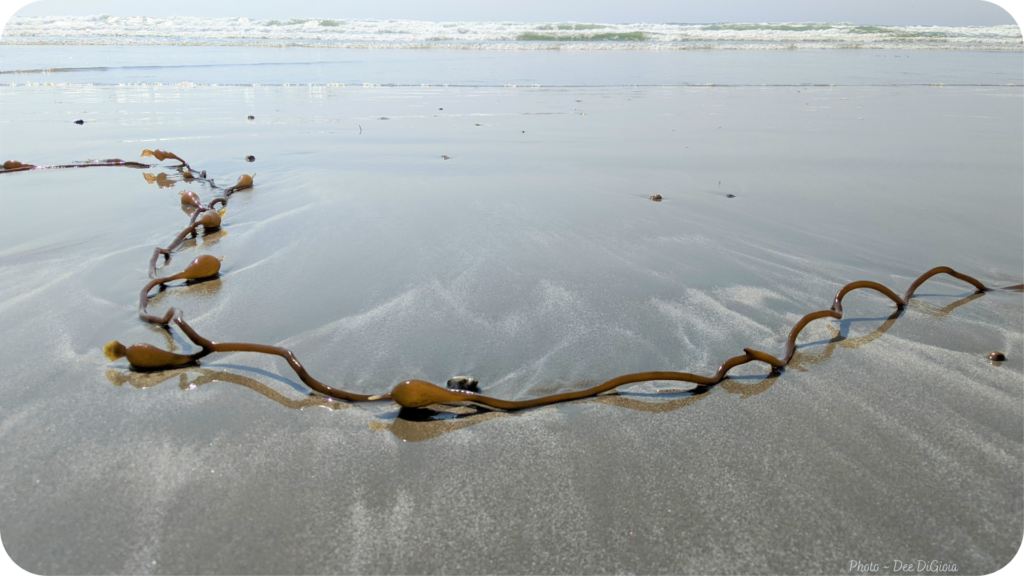
…while other days, the beach wrack looks like a catastrophe – a giant, tangled, twisty, heavy mess wound tightly into unbreakable knots.
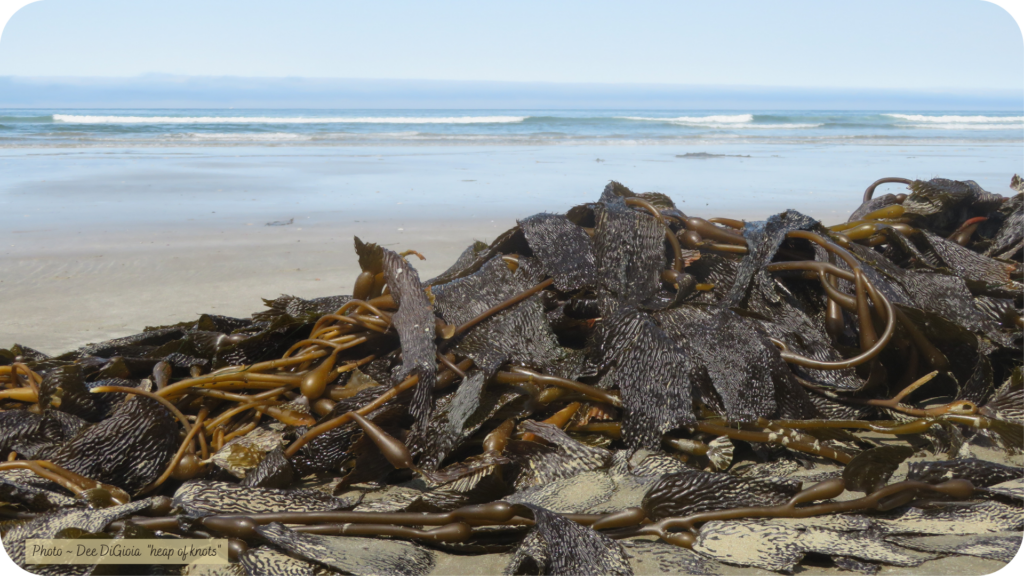
Expectations vs Acceptance
When I first moved to the central coast I remember the initial feeling of judging the “ugliness” of the beach wrack and wondered why “they” didn’t clean the beaches here. On the next breath, catching myself in this judgmental attitude and tendency, like many of us, to have expectations of how things “should be”. I suppose I had the image of a tropical beach with its white sandy shores. But I moved to the central coact of California and this coast has its own way of showing up in the world apart from my expectations. Living with an attitude of expectations is certain to disappoint. Expectations add tension… and knots within. Acceptance of “what is” allows us to see life for what it is and be open to infinite possibilities and gifts. Of course these thoughts and insight were all within a minute and I dropped those expectations. Afterall, nature has a way of softening the heart!
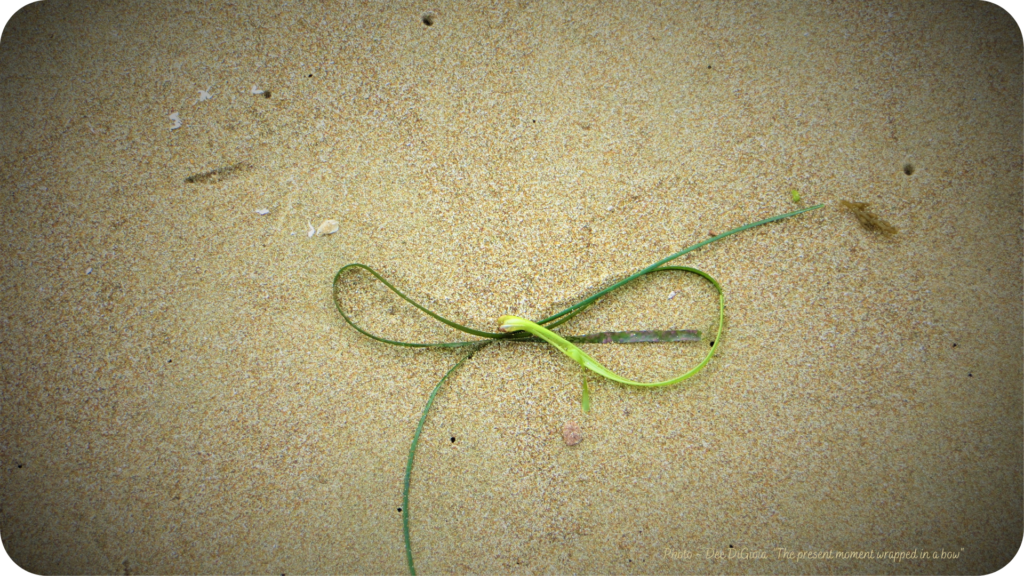
I returned to my curious nature and became inquisitive – why is there so much sea wrack here? Why is there more some days than others? My curiosity helped me to learn that the beach wrack has an important place and role in the cycle of life as it creates a unique coastal ecosystem. It creates shelter and a food source for the kelp flies and other organisms on the sandy beach. In turn some sea birds feed on the organisms. As the wrack decomposes, it provides nutrients which decomposes which becomes beneficial to the kelp and other plants that grow offshore. Furthermore it has an important role acting as a natural barrier to storm surges and large waves- by holding sand that would otherwise be taken away with the wind and surf. It helps create dunes that can act as a structural support for other plants being established on the beach. For these reasons, beach wrack can be considered an important player in protecting coastal communities. Of course the kelp forests in the ocean provide so many benefits as well.
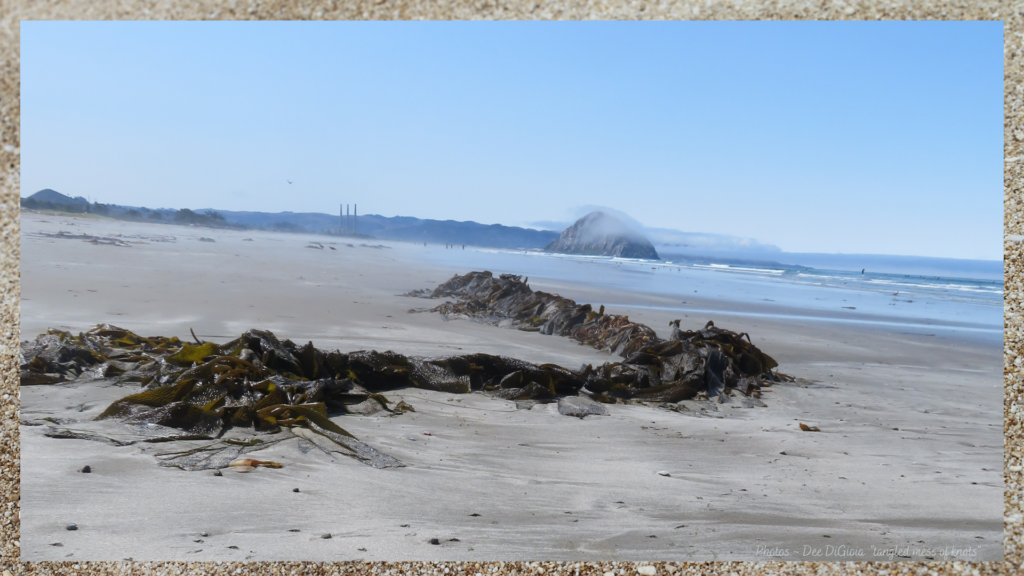
Appreciation
It didn’t take long to begin to appreciate the different patterns temporarily left like art, Nature’s art, whenever I visited! We can be mere observers of these delightful patterns, shapes, and colors which are present in this moment only and will be erased and re-arranged the next time by the tides and the weather. Being in awe and gratitude is a lovely and healthier way to counter an attitude of expectations and trying to control things which can’t be controlled.
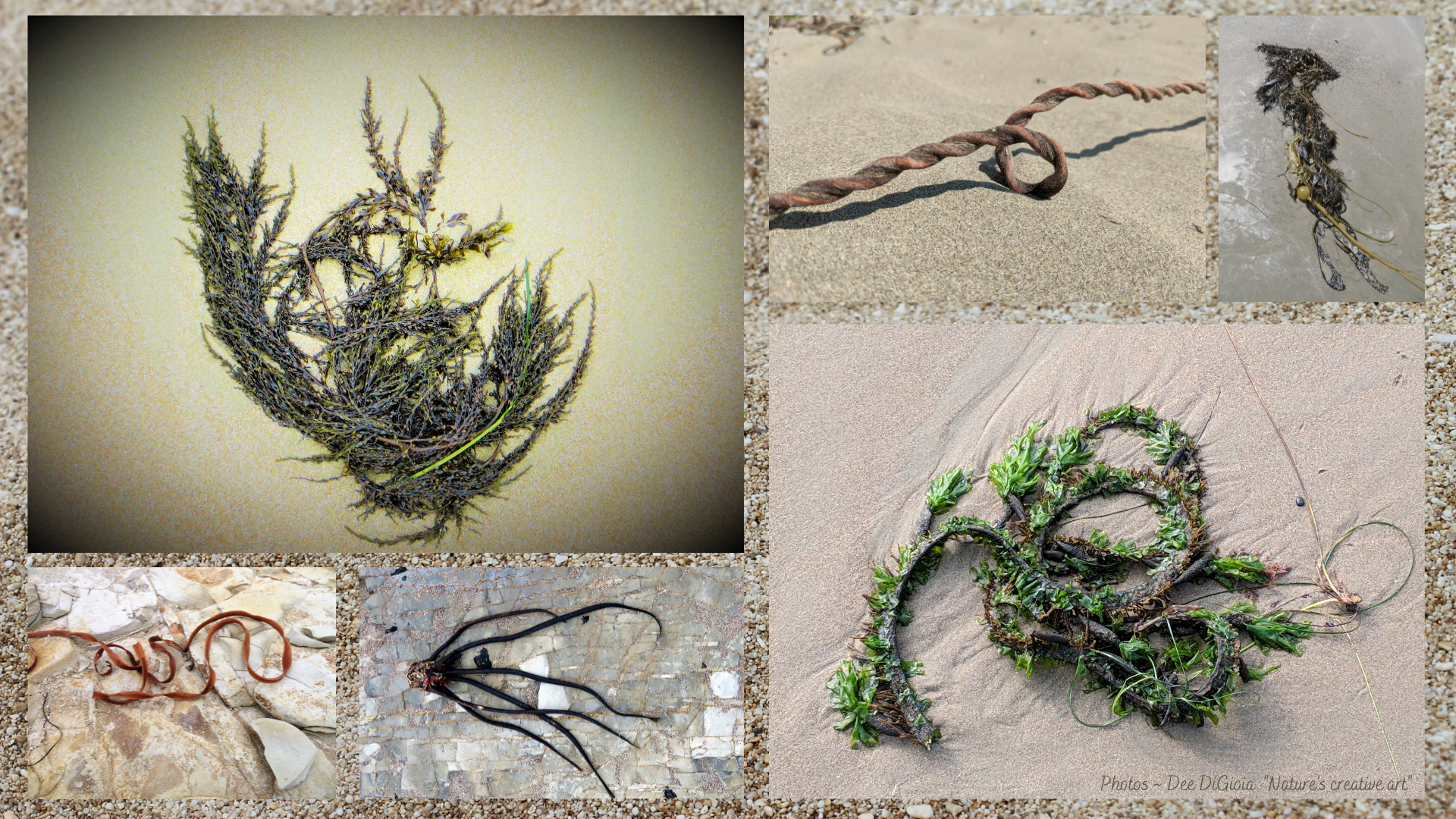
Stress knots
On one of my beach walks a few weeks ago, when I saw some massive tangled, knotted heaps of beach wrack it brought to mind some similarities when it comes to stress. Stress comes in all sizes and shapes that come and go in our lives like the waves washing up the beach wrack! It may be a singular strand of a stressor that shows up, or it can be a complex tangle of stressors from your day, your week, or your life. Sometimes we use the term “nerve-wracking” to describe how stressful something is/was — those things that are struggles or challenges causing stress, anxiety; irritation, anger, annoyances or even unhelpful ways of thinking. And quite often when we feel “wound up” or stressed we get tension headaches or our muscles get tight in our neck and shoulders and become knots.
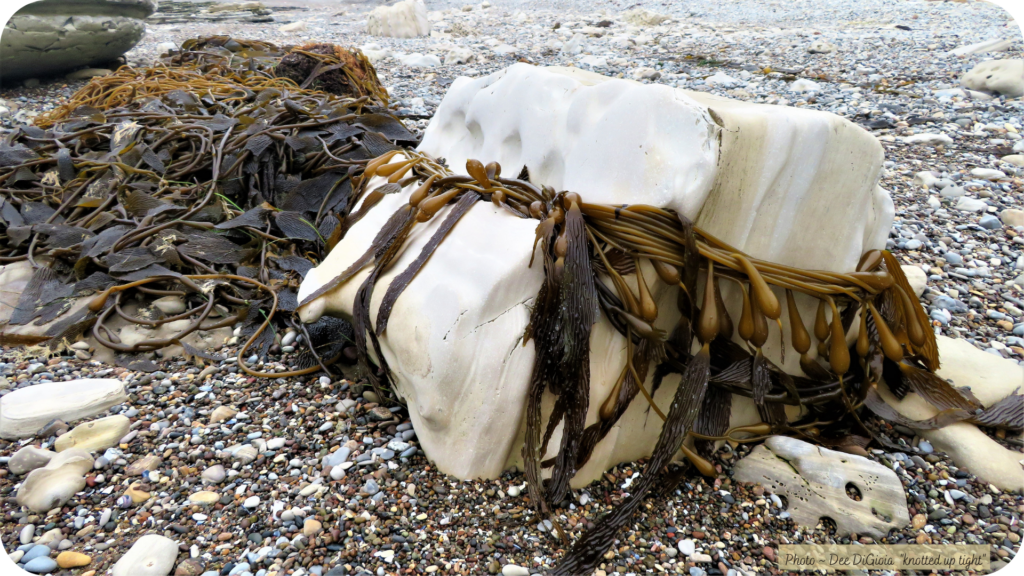
Make an offering of your “package”
We can connect our experiences to this metaphor of the beach wrack and ask ourselves, What are the tangled knots in my life? What is that “thing” or things that keep returning like the beach wrack washed up on shore? Sometimes it’s one thing, and other times it’s a big tangled mess, wound tightly with a pile of other stressors that seems to go on and on and weigh us down. Sometimes we go on with our day or week or lives without stopping to notice the knots winding around and around one another until something happens… impacting moods, attitudes, relationships, sleep, and even creating physical pain or health issues. Living mindfully helps us notice these things so we can take care of the knots as we begin to notice them tightening or growing massively!
When we come to the “end of our rope”….when we are at the point of “I can’t do this” or “I don’t know what to do”, we can put “it” down, trusting the guidance of someone or something else to guide our next steps and help loosen the knots.
Let nature be your guide. If you are open, if you are truly present with the experience of being out in nature you can open all your senses one by one to facilitate a deeper connection with nature and all it has to reveal. Receptiveness allows for spaciousness within and this spaciousness allows for wisdom and creativity to take shape. This is when you may receive a message, an idea, an answer, or an inspiration and become a participant in creatively connecting with nature and your own heart in a deeper way and loosening the grip of the constricting knots.

The slow reveal ~ a package in it’s new form
One of my favorite “activities” to share at our nature retreats, is creating the opportunity for our participants to tap into this creative space, to open up to this spaciousness, to loosen the knots, and to tell a story through their symbolic art of what came up for them in the “slow reveal.”

Reminders from the sea
By pausing, connecting, and paying attention, we find healthy ways to take care of ourselves. Nature and mindfulness are a powerful combination to show us how to let go of worries or other strong emotions, our piles of “to-do’s” and expectations. Welcome nature as your guide in revealing how to let go and loosen those knots and take to heart some of these reminders from the sea:
Take time to relax and coast
Let cares drift away
Sea life’s beauty
Adapt to changing tides
Hang loose
Sea treasure in simple things
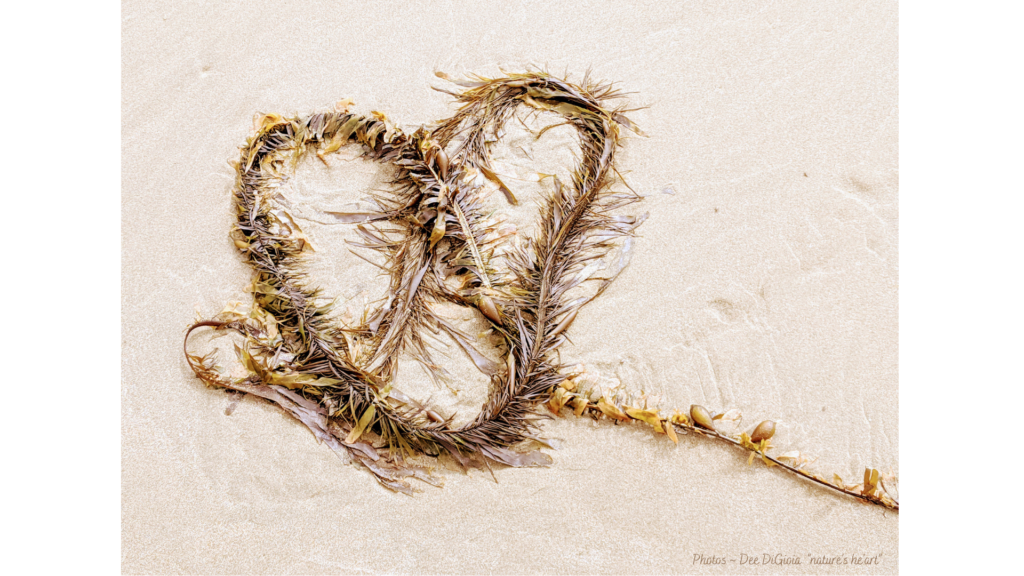
“Discovering this idyllic place,
we find ourselves filled with a yearning to linger here,
where time stands still and beauty overwhelms.”
~ Vincent Van Gogh
Join our mini-retreats, including our nature retreats for a few hours of dropping anchor and allowing nature to hold and nourish you. We meet at various locations by the sea, or into the forest on the central Coast of California, San Luis Obispo County ~ LEARN MORE

